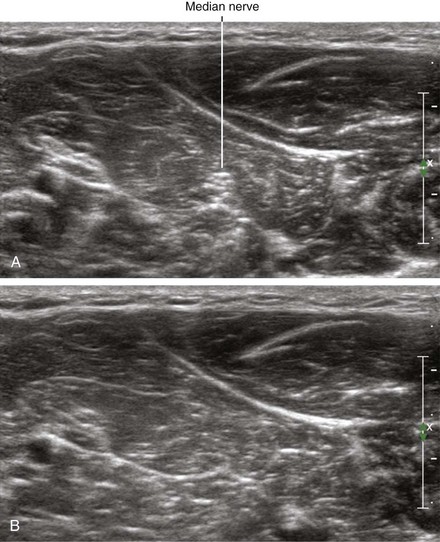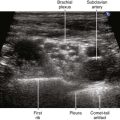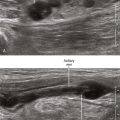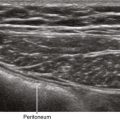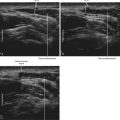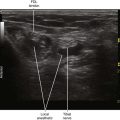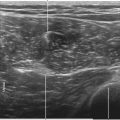6 Anisotropy
Isotropic means equal in all directions. Anisotropic implies angle dependence. The latter term has been used to indicate the change in amplitude of received echoes from a structure when the angle of insonation is changed. Anisotropy is a discriminating feature between nerves and tendons. Tendons are more anisotropic than nerves, meaning that smaller changes in angle (about 2 degrees) alter the echoes from tendons than the changes in angle (about 10 degrees) that alter the echoes from nerves. The anisotropy of nerves also is important because during interventions it can be challenging to maintain nerve visibility while manipulating the transducer to image the block needle.1 With training, practitioners learn to naturally manipulate the transducer to fill in the received echoes from nerves. The amplitude of the received echoes from peripheral nerves is usually largest when the sound beam is perpendicular to the nerve path. Other structures, such as muscle, also exhibit anisotropy.2
Clinical Pearls
• Anisotropy means that the backscatter echoes from a specimen depend on the directional orientation within the sound field.
• Anisotropy can be quantified by specifying the transducer frequency and the decibel change in backscatter echoes with perpendicular and parallel orientation of the specimen.
• Nerves, tendons, and muscle all exhibit anisotropy. Of these structures, tendon echoes are the most sensitive to transducer manipulation.

